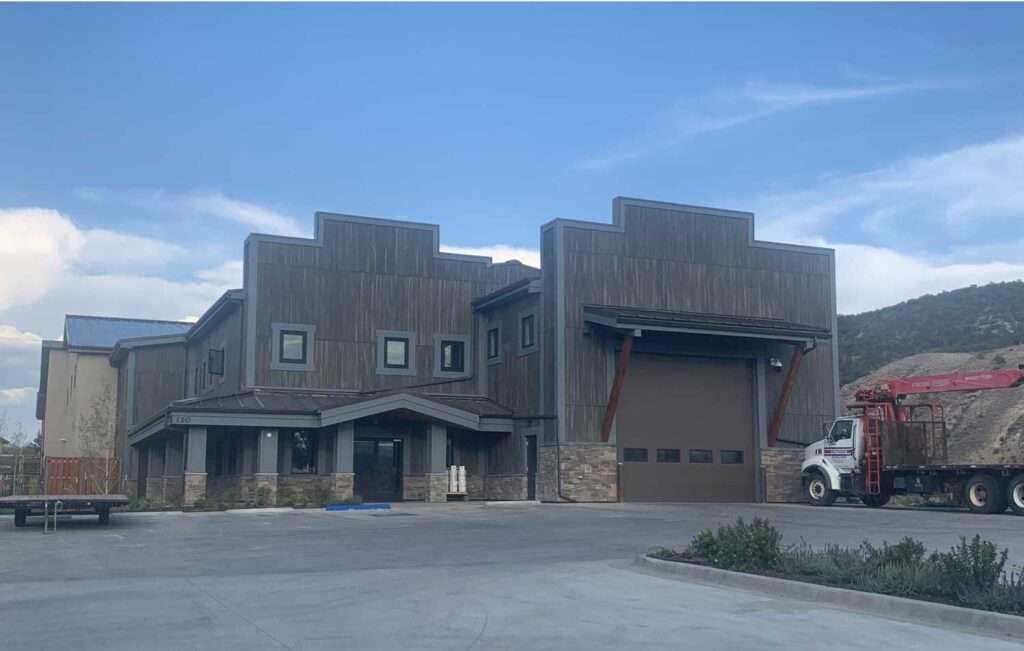Commercial steel buildings have revolutionized the construction industry with their strength, versatility, and cost-efficiency. From warehouses and manufacturing facilities to office complexes and retail centers, steel has become the go-to material for modern commercial construction projects.

Whether you’re a business owner planning a new facility or a developer exploring sustainable construction options, understanding the ins and outs of commercial steel building construction can help you make informed decisions. This post dives deep into what commercial steel buildings are, the construction process, benefits, applications, and future trends.
What Are Commercial Steel Buildings?
Commercial steel buildings are structures primarily made of steel components, including the framework, walls, and roof systems. These buildings are known for their ability to span wide spaces without internal columns, providing unobstructed layouts perfect for various business applications.
The core elements typically include:
- Steel framing: I-beams and columns that form the skeletal structure
- Wall and roof panels: Often made from corrugated steel or insulated metal panels
- Foundation system: Usually concrete to anchor and support the steel frame
- Optional components: Mezzanines, roll-up doors, insulation, and interior finishes
Steel buildings are prefabricated or custom-engineered to meet the specific design and load-bearing requirements of the project.
Why Choose Steel for Commercial Construction?
1. Durability and Longevity
Steel is one of the strongest building materials available, capable of withstanding harsh weather conditions, seismic activity, and heavy loads. Unlike wood or concrete, steel does not warp, rot, or attract termites, which significantly extends the life of the building.
2. Cost-Efficiency
Prefabricated steel buildings are often less expensive than traditional construction methods. Components are manufactured off-site and assembled quickly on location, reducing labor and construction time. Steel buildings also require less maintenance over time.
3. Flexibility in Design
Commercial steel buildings can be customized to meet diverse architectural and functional needs. Wide, open interiors allow for multiple layout options. Whether it’s an open warehouse floor, a multi-story office complex, or a retail store with large display areas, steel adapts easily.
4. Speed of Construction
Time is money, especially in business. Steel buildings are known for their quick turnaround times. Since the components arrive ready for assembly, construction can proceed much faster compared to conventional methods.
5. Sustainability
Steel is 100% recyclable, making it one of the most eco-friendly construction materials. Many steel structures use recycled steel, reducing the demand for raw materials and minimizing the project’s environmental impact.
The Commercial Steel Building Construction Process
1. Planning and Design
Every successful project begins with a solid plan. Architects and engineers work closely with clients to understand their space requirements, budget, and aesthetic preferences. The design phase includes:
- Site analysis and zoning compliance
- Building dimensions and layout
- Load-bearing analysis and wind/snow loads
- Integration of HVAC, electrical, and plumbing systems
- Exterior finishes and insulation needs
2. Engineering and Permits
Structural engineers finalize the building specifications, ensuring the design meets local codes and safety standards. The construction team will also obtain permits for zoning, fire safety, and structural integrity.
3. Fabrication
Once the plans are approved, the steel components are fabricated in a controlled environment. This process includes:
- Cutting and welding I-beams
- Drilling bolt holes
- Galvanizing or painting steel to prevent rust
- Packing and labeling each piece for easy assembly
4. Site Preparation and Foundation
While fabrication is underway, the construction team prepares the building site. This involves:
- Excavation and grading
- Pouring a concrete foundation or slab
- Installing anchor bolts for the steel columns
Proper foundation work is critical to ensure the building’s stability and alignment during erection.
5. Erection of the Steel Frame
With the site ready and components delivered, the steel frame is erected using cranes and skilled crews. The sequence typically includes:
- Setting columns and I-beams
- Installing roof trusses and secondary framing
- Bolting and welding connections
- Adding girts and purlins for wall and roof support
This phase is relatively quick, often taking just a few weeks for medium-sized commercial buildings.
6. Enclosure and Finishing
Once the frame is up, the walls and roof panels are installed. Insulation, doors, and windows follow, along with:
- Electrical and plumbing rough-ins
- HVAC systems
- Interior framing and drywall
- Flooring, painting, and final finishes
Depending on the building’s use, additional customizations like fire suppression, data cabling, or commercial kitchen equipment may be installed.
Common Applications of Commercial Steel Buildings
Steel buildings can be adapted for virtually any commercial need. Popular applications include:
- Warehouses and Distribution Centers
Their large, open interiors make them ideal for inventory management and logistics. - Office Buildings
Steel frames allow for flexible interior design and multi-level floor plans. - Retail Stores and Showrooms
Clear-span construction offers open spaces with wide storefronts and display areas. - Automotive Shops and Garages
Steel’s strength supports heavy equipment and mezzanines. - Industrial Facilities
Steel buildings are ideal for manufacturing, fabrication, and food processing plants. - Sports Complexes and Gyms
The expansive interior spaces accommodate courts, tracks, and bleachers. - Agricultural Operations
Steel buildings work well for barns, storage sheds, and equipment housing.
Challenges and Considerations
While steel buildings offer many advantages, it’s important to consider a few challenges:
- Upfront Design Precision
Prefabricated systems require accurate planning. Changes mid-project can be costly. - Thermal Conductivity
Steel conducts heat and cold easily. Proper insulation is crucial for energy efficiency. - Aesthetic Limitations
While modern techniques can improve appearance, steel buildings often have an industrial look unless enhanced with veneers or architectural cladding. - Corrosion Risk
Though treated against rust, steel can still corrode over time in very humid or coastal environments without proper maintenance.
Trends in Commercial Steel Building Construction
The industry continues to evolve with advancements in materials, design, and sustainability. Some current trends include:
- Hybrid Construction: Combining steel with materials like glass, wood, or concrete for aesthetics and performance.
- Smart Building Systems: Integrating IoT, energy monitoring, and automation into steel-framed buildings.
- Modular Construction: Prefabricated steel modules that speed up timelines and improve consistency.
- Green Building Certifications: More steel structures are being designed to meet LEED and energy efficiency standards.
Final Thoughts
Commercial steel building construction represents a smart, future-ready solution for businesses seeking durability, flexibility, and efficiency. With streamlined fabrication, rapid installation, and endless customization potential, steel buildings are transforming the way we approach commercial architecture.
Whether you’re building a small workshop or a large distribution center, investing in a steel structure offers long-term value, resilience, and adaptability in a rapidly changing world.
